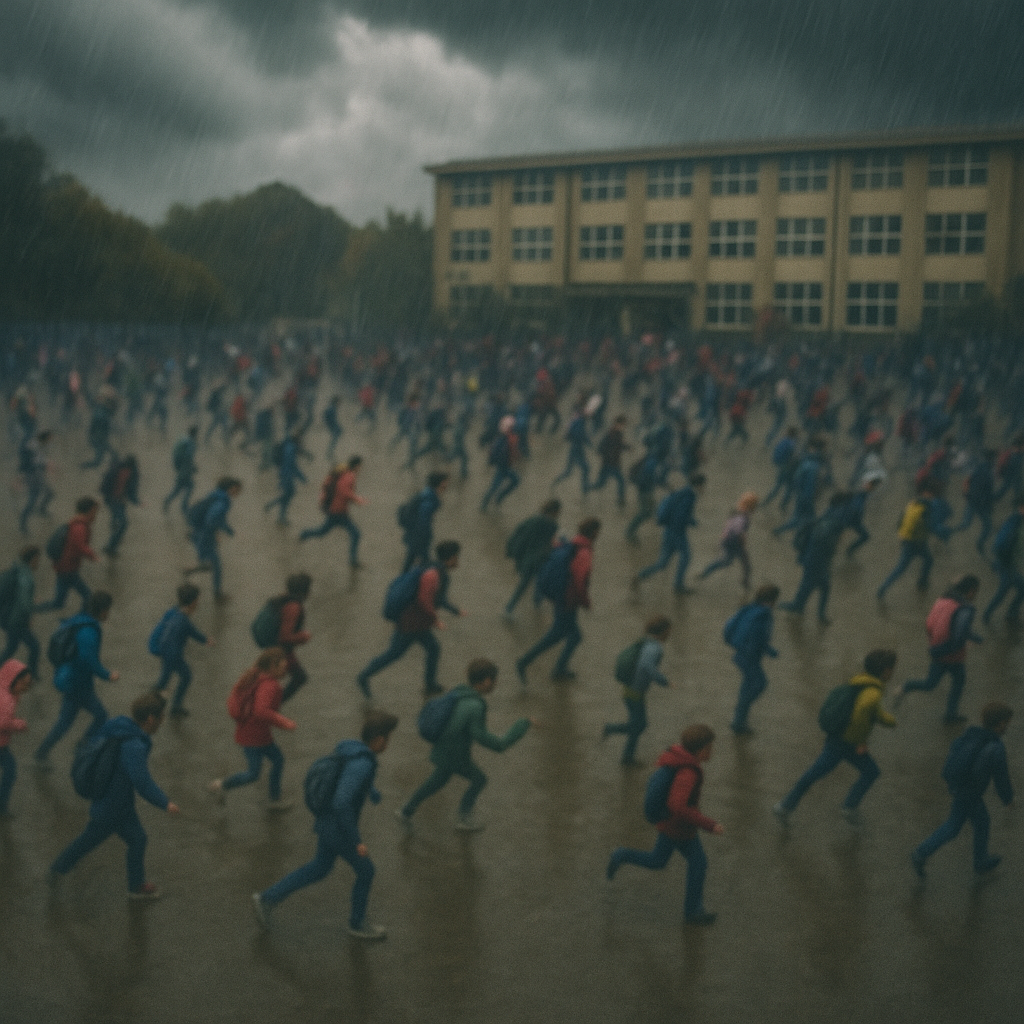When a tip from the Harvard Business Review hits 14 million followers, you can assume it struck a nerve. Cheryl Strauss Einhorn’s recent post, shared at the end of May as HBR’s Management Tip of the Week on Linkedin, outlined four questions leaders should ask in uncertain times. As someone who’s worked in classrooms, newsrooms, and humanitarian crises, I read it and thought: This isn’t just a business tip. This is a teaching tool.
AI, teacher shortages, and mental health crises: these aren’t interruptions. They’re the new normal.
Education doesn’t just have storms. It is a storm. Timetables shift. Curricula change. Students come and go (so do parents). So do governments. And still, we teach. If leadership questions help CEOs make wiser choices, they might just help teachers create more meaningful classrooms. So, I took the liberty of adapting those questions to our world: the beautiful, chaotic cosmos of learning. Even better: to the heart of it – to the art of learning to learn – and to what we do at enduri.
This post is about how teachers and school leaders can rethink their decisions with long-term impact in mind. It’s about using business thinking to build learning resilience. And it’s about why “learn to learn” should move from buzzword to foundation.
These are Cheryl Strauss Einhorn’s four questions leaders should ask in uncertain times, translated for education:
- What teaching decisions will still make sense a year from now?
- If this became a case study in leadership, what would it teach?
- What if this isn’t the storm—what if it’s the climate?
- What’s the cost of waiting?
- How this shaped enduri—and why we need you.

Education keeps acting like we’re waiting for stability to return. It won’t. AI, teacher shortages, and mental health crises: these aren’t interruptions. They’re the new normal.
From Quick Fix to Lasting Impact
Avoiding the short-term trap
It’s easy to default to survival mode. Patch up gaps. Drill for tests. Download another app. But what if we asked ourselves: Will this still serve my students in 12 months? Chances are that some fixes won’t. Others – like helping students develop memory strategies, reflection habits, or independent learning routines – absolutely will. Skills have no expiry date. Content mostly does.
Einhorn writes, “This question invites you to prioritise decisions that align with long-term values” (1). In teaching, that could mean choosing to embed metacognition in your lessons, even if it takes more time now. For example, introduce students to several work-planning strategies, not a one-size-fits-all approach. Let them try, fail, and refine. Then give them time to transform a strategy into a routine, and a routine into mastery. That’s how durable learning habits are formed.
Every Decision Sends a Message
Modelling leadership in the everyday
Teaching is leadership. If you panic about grades, so do your students. If you show calm, courage, and curiosity, they learn that, too. Ask yourself: If my decisions became leadership case studies, what would they say about me?
For instance, when a colleague criticises you over a minor detail, do you turn away and roll your eyes—or do you show empathy and take interest in their comment? For your students, observing your reaction, your response becomes a model of engagement and constructive communication.
“This question tests not just the logic of your decision, but its message,” writes Einhorn (1). Consider this: research by the OECD shows that schools with a strong culture of trust outperform those with high-stakes pressure environments (2). So, does your response to a cheating incident show fairness and a growth mindset—or just fear of bad stats? A teacher who says, “Let’s talk about why this happened and how to rebuild trust,” isn’t just solving a problem. They’re shaping a culture.
When the Exception Becomes the Rule
Recognising disruption as the new normal
“This isn’t the storm. It’s the climate” (1). That one hit me hard. Because education keeps acting like we’re waiting for stability to return. Spoiler: it won’t. AI, teacher shortages, hybrid learning, and mental health crises: these aren’t interruptions. They’re the new normal.
So, we need classrooms that adapt, not react. Learning strategies, time management, and real reflection (not smiley face stickers—but genuine coaching and critical thinking) are no longer “extras.” They are survival skills. And they should be taught accordingly. Yet “learning to learn” is often squeezed in somewhere between homework and the next test. It’s treated as soft, invisible, ungraded—and therefore undervalued. A mindset shift is needed: Learning to learn is not a luxury. It’s the infrastructure.

If my decisions became leadership case studies, what would they say about me?
The High Price of Doing Nothing
Why waiting rarely helps
Being a teacher is tough. There are so many battles, you can’t fight them all. So yes, inaction feels safe. But it’s often the riskiest move. What happens if we wait until the system gets fixed, until funding improves, until someone else figures it out? We lose students. We lose teachers. We lose time.
Einhorn reminds us that “inaction carries hidden risks” (1). Trying something now, even if it’s small, even if it’s messy, can start momentum. Waiting for perfect conditions? That’s a (bad) joke. There is no such thing as a perfect classroom. It reminds me of Waiting for Godot by Samuel Beckett—a play where two characters wait endlessly under a tree for someone who never arrives. All dialogue. No resolution. It’s theatre—but it’s also a metaphor for what happens in education when we delay the obvious: nothing changes.
From Realisation to Action: Why I Founded enduri
The tipping point for change
When I first read those questions, I couldn’t help but rewind my own journey. I was a young teacher with a deep passion for learning processes but no money, no network, no roadmap. Then I became a journalist. Then a humanitarian worker. Then a mother. Life gave me experience, values, and urgency – and the privilege to meet the smartest education experts, visit inspiring schools, and dive into the mind-blowing research of neurology and learning science.
And finally, a realisation: This isn’t going to fix itself. So, I stopped waiting and started building. enduri was born from the belief that teaching students how to learn is not a side act. It belongs on the big stage. The main act, in prime time. When content gets outdated and realities manipulated, what remains are deeply learned skills and strategies.
Starting enduri wasn’t easy. But it was aligned: with long-term goals, with values, and with the climate of education today. Our tool helps students build learning strategies, not just answer questions. We help teachers embed reflection, planning, and resilience into everyday learning. It’s not glamorous, but it’s lasting.
What We’re Building—and Who We’re Looking For
A call for allies
We’re here. We’re working. But we’re not finished. What’s still missing are partners: schools, allies, foundations, thinkers. People who believe that learning how to learn is the core skill of our age.
If you’ve read this far, you probably agree. So don’t wait. Reach out. Let’s start a pilot. Let’s talk. Let’s co-create. Because if this became a case study one day, I’d love it to be about how educators across sectors stopped waiting – and started building the future of learning.
Sources:
Cheryl Strauss Einhorn, “In Uncertain Times, Ask These Questions Before You Make a Decision”, Harvard Business Review (2025). Harvard Business Review
OECD (2020), “Education at a Glance: Indicators of Trust and Equity in Schools”. OECD Education at a Glance 2020
Beckett, Samuel. Waiting for Godot. Grove Press, 1954.
European Commission (2022), “The Need for Learning to Learn in the Digital Age”. European Education Area – Digital Education
Education Endowment Foundation (2021), “Metacognition and Self-regulation”. EEF Guidance Report

